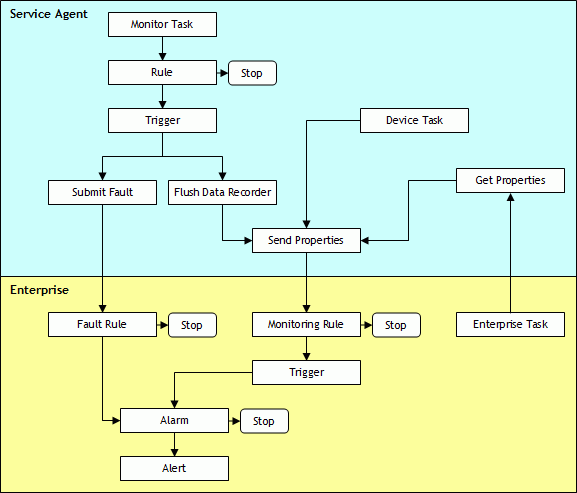
The Questra IDM Application Suite uses stored procedures (scripts) that are associated with various kinds of filters and rules against which device data is evaluated. There are rules for examining device status ("monitoring" rules), device usage ("usage meter" rules), and device faults. When status, usage, or fault data is received from a device, the stored procedures associated with the device's rules and filters are invoked. The return codes from the stored procedures indicate what actions should be taken by the system. For example, when a rule "triggers" (that is, when it returns "true" for the expression that is being evaluated), an alarm is raised.
When you create a rule for a group, device type, or device, you will work on a Rule dialog.
Rules can be defined at the group, device type, and device levels. (Note that a group cannot be "empty," but must have at least one device associated with it in order for rules to be defined for the group.) A device "inherits" any rules from its associated group and device type.
The illustration below shows how rules are used for evaluating data collected from a device. Some of the rules evaluate faults submitted by the device, while others evaluate collected monitoring data. Depending on the rule, an alarm could be generated, which in turn could generate an alert.
